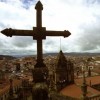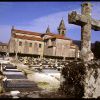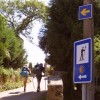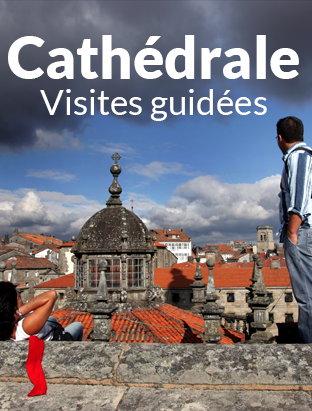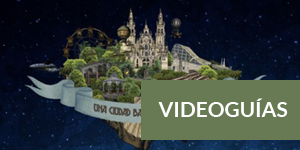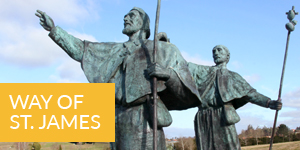Destination religieuse
Le lieu choisi. Phare de la Chrétienté médiévale
Selon une ancienne tradition, Saint-Jacques, l’un des douze apôtres, voyagea en Hispanie et arriva en Galice, aux confins de la terre, pour répandre le Christianisme.
En l’an 44, il fut exécuté à Jérusalem et son enterrement fut interdit. Ses disciples naviguèrent jusqu’en Galice, où ils lui donnèrent une sépulture. Sa tombe fut oubliée jusqu’en 813, quand un scintillement indiqua le lieu où il se trouvait.
Y fut érigé un ermitage qui, avec le temps, devint une Cathédrale monumentale. Autour d’elle naquit et grandit une merveilleuse cité cléricale, Saint-Jacques de Compostelle, qui devint la principale destination des pèlerinages européens médiévaux par le biais du réseau de chaussées qui constituent le Chemin de Saint-Jacques.
Au XIIe siècle, la Papauté octroya le Jubilé Plénier de l’Année Sainte, ce qui fit de Saint-Jacques la Troisième Ville Sainte, après Jérusalem et Rome. Depuis lors, chaque année où le jour de l’Apôtre, le 25 juillet, tombe un dimanche, des milliers de croyants réalisent un pèlerinage pour obtenir le pardon pour tous leurs péchés. Cette 2021 sera la 120e Année sainte de l'histoire, à compter de 1182. Les prochaines seront en 2027 et 2032.
Intangible canal d’idées, de propagation de la foi, de relations commerciales et d’échanges artistiques et culturels, le Chemin fut la route spirituelle qui construisit l’Europe et fit de Compostelle la croisée de la Chrétienté médiévale.
C’est pourquoi le voyage à Saint-Jacques va bien au-delà de la participation aux formes traditionnelles du culte: c’est une recherche des racines spirituelles et culturelles de l’Europe chrétienne. À une époque où les gens recherchent un sens à leurs existences de plus en plus incertaines et frénétiques, le pèlerinage et la voyage à Saint-Jacques, dans son expression authentique, est aussi un voyage de découverte, d’enrichissement personnel et de rencontre avec d’autres voyageurs et pèlerins, toutes nationalités et tous âges confondus, qui de par leur joie contribuent à l’atmosphère bien vivante que l’on respire dans toute la ville.
Bienvenue à Saint-Jacques de Compostelle.











